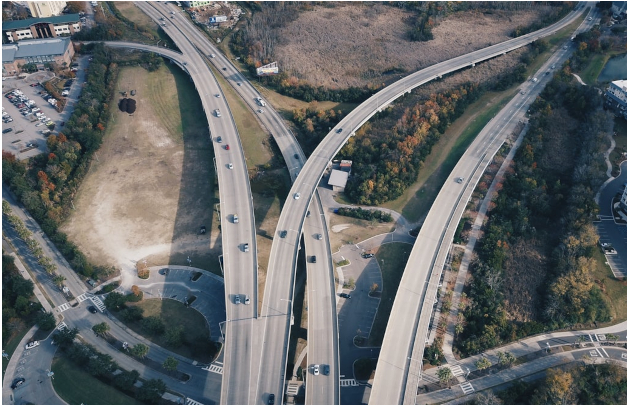The United States economy relies on infrastructure. From roads and bridges to railways, waterways, and electrical grids, the country depends on it to stimulate economic growth, transport goods from one place to another, and connect people. It allows transportation, internet connection, electrical supply, and directly affects public health by providing safe drinking water, eliminating pollution in bodies of water, and eliminating waste.
But our infrastructure has been overtaxed — much of the nation’s infrastructure was built in the 1960s, and is nearing the end of its lifespan — causing essential programs and structures to fall by the wayside. In fact, delays caused by traffic congestion cost the U.S. economy over $120 billion annually. Given how pressing and extensive America's infrastructure challenges are, it’s surprising that street and highway repairs, bridge construction, and more receive relatively little funding compared to other government initiatives.
Infrastructure Report Card
Every four years, the American Society of Civil Engineers (ASCE) releases an infrastructure report card to provide a comprehensive assessment of 16 major categories. The last report card was released in 2017 and is due to receive a new rating in 2021. The report card uses a recognizable A to F scale, similar to a school letter grade.
The most recent report card gave the country a cumulative grade of D+, which is defined as “in poor to fair condition and mostly below standard, with many elements approaching the end of their service life.” What’s even more troubling is that the country earned the same grade in 2013, revealing that infrastructure has not seen an improvement for nearly a decade.
“We see the consequences of our failing infrastructure play out every day. We waste hours sitting in traffic, power outages become more frequent, and we lose billions of gallons of water through leaky pipes – and these impacts are having a direct effect on American families, who are losing at least $3,400 a year in disposable income due this poor, aging infrastructure.” — Casey Dinges, Senior Managing Director of the American Society of Civil Engineers
It’s important to evaluate why the score is so low and how to improve so that vital infrastructure doesn’t continue to fall through the cracks. Increased infrastructure spending could not only raise the score on the ASCE report card, but also improve lives and save the country billions of dollars. Dinges made several recommendations for improving U.S. infrastructure, including:
- Re-authorizing surface transportation programs
- Making the U.S. water systems a national priority
- Creating project plans based on quantifiable metrics instead of political wish lists
The Natural Resources Defense Council (NRDC) estimates that by spending $188.4 billion on water infrastructure alone over the next 5 years, we could boost economic activity by $265 billion while creating 1.9 million jobs.
Next Steps to Improve Infrastructure
According to the Council on Foreign Relations, the U.S. would need to spend $2 trillion by 2025 to bridge the gap in our infrastructure needs. Furthermore, increased spending on infrastructure is likely to stimulate the economy by increasing the reliability and efficiency of transportation while lowering the cost to travel.
Increased investment in infrastructure also increases employment opportunities for skilled workers who build and fix water lines, bridges, roads, and more. For example, a 1% increase in infrastructure spending could generate $320 billion within a year, and an $83 billion investment could produce 1.7 million jobs in the next three years. Types of infrastructure that need spending the most urgently include:
- Transportation:
The U.S. Government Accountability Office has found that nearly one out of every four United States bridges are deficient and need repair. - Commercial rail:
Railways move nearly 40% of the country’s goods. - Water and energy:
The Environmental Protection Agency (EPA) estimates that drinking water, irrigation systems, and wastewater will need $632 billion over the next decade.
Supporting Infrastructure Investment with the Right Equipment
It’s clear that United States infrastructure needs work to continue powering the economy, transporting people and goods to their desired destinations, maintaining electricity, and keeping the water that flows into our homes and businesses clean. And with the right equipment, these vital systems can work with the maximum efficiency and duration.
When rebuilding water systems, pipelines will need efficient parts like the Sundyne HMD Kontro and Ansimag sealless pumps to effectively build or repair hydraulic systems across the United States. And when pumping concrete for road maintenance, measuring and managing liquid flow is critical. When treating wastewater, Milton Roy metering pumps provide reliability and accuracy. Equipment like the Badger meter product line steps up to the plate to meet rising demand.
With increased spending over the next several years and investment in efficient equipment, health and safety conditions will improve, roads will be more navigable, more people will be employed, and it will save billions in the long run.

